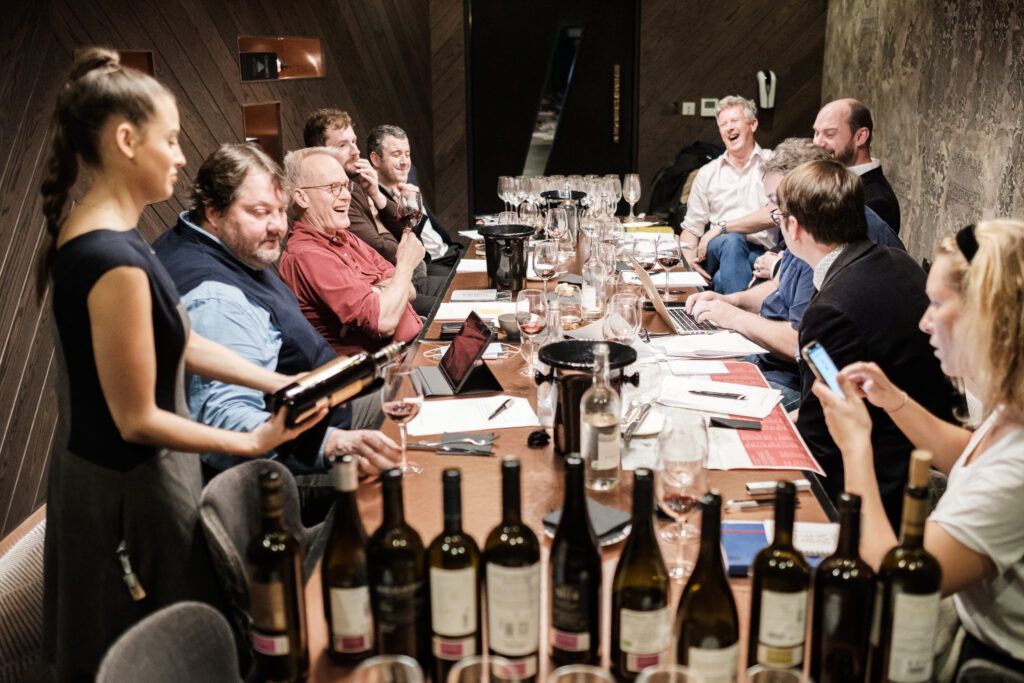The Buyer would like to thank Tim Atkin MW and our Ribera del Duero panel for taking part and sharing their views. The panel was made up of Maggie Macpherson, group wine buyer at Jeroboams; Richard Ellison, founder and managing director at Wanderlust Wine; André Luis Martins, head sommelier at The Cavalry and Guards Club; wine broadcaster, Joe Wadsack; Paul Belcher, chef and owner of the Tapas Room group of restaurants in south London; consultant and buyer, Harry Crowther, wine buyer for Good Pair Days, the new e-commerce site and wine club; and wine buyer and columnist, Douglas Blyde. You can read the first part of the report here.
Panel Tasting: A selection of Ribera del Duero wines from Tim Atkin’s 2021 Ribera del Duero Top 100 Selection
To give the panel a clearer assessment of the developments taking place in Ribera del Duero, we gave them the chance to taste through and discuss a selection of wines from Tim Atkin’s Ribera del Duero Top 100 Selection 2021/2022.
1st Wine
Tr3smano Albillo Mayor Cosecha 2019 (13%)
100% Albillo Mayor
Soils: Very poor limestone
Price: c. 30€
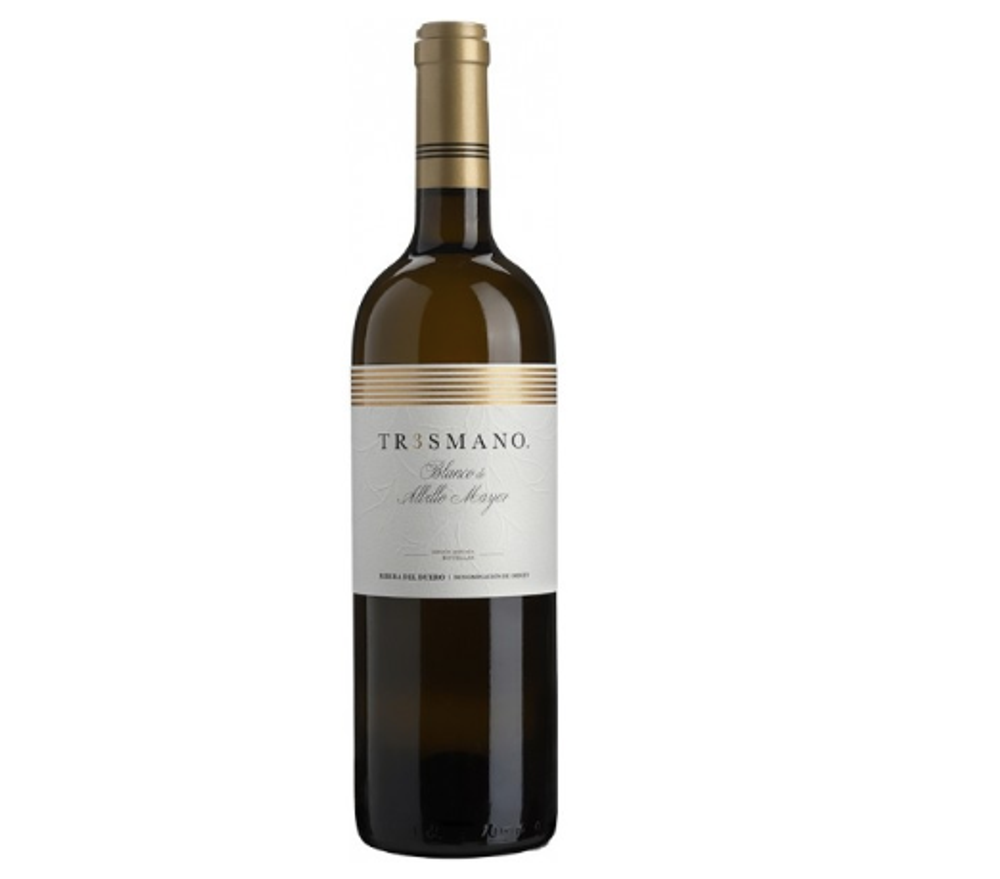
A great example of the white wines now being made in Ribera del Duero
It was only in 2019 that producers in Ribera del Duero were authorised by the Consejo to make white wine, and they have wasted no time in producing a wide variety of styles that are starting to attract rightful attention of their own.
The fact that Tim Atkin included five white wines in his Top 100 Selection for 2021/2022 is a mark of how quickly white wines have developed in the region. “I wanted to show how much interest there is now in white wines,” he says.
“The Tr3smano Albillo Mayor is a good example of what producers are now making.” says Atkin. This particular wine comes from 60 to 100 year-old bush vines from the Albillo variety that is normally found in north west Spain. DNA studies have shown Albillo Mayor to be a parent of Ribera del Duero – and Spain’s – flagship Tempranillo red grape variety.
Atkin says there are thought to be only 375 hectares of Albillo Mayor left in Ribera del Duero after many hectares were pulled out as they are only worth a third of the value of Tempranillo vines.
“Producers are clearly feeling their way with this particular grape variety. Some are using it with stainless steel, others are ageing in wood, others are going part malolactic. It is definitely an interesting grape variety to work with. It would be interesting to bring it to the UK as it would be the first Abillo Mayor here,” explains Atkin.
Tr3smano showcases the combined skills of its partners, Fernando Remírez de Ganuza and Pedro Aibar, who between them have almost 70 harvests of experience making wine in the region.
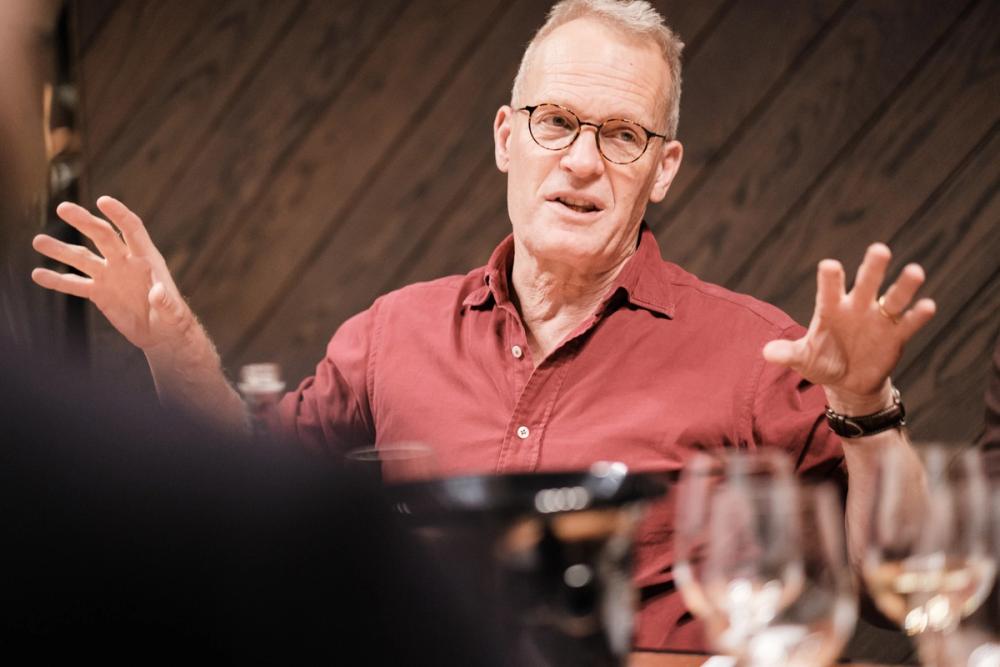
Tim Atkin MW says producers are still feeling their way with white wines in the Ribera but there is clearly great potential. Photograph Thomas Skovsende
This wine is harvested by hand in small boxes with a meticulous selection of the grapes before going to a direct press. It is fermented and matured in new French oak barrels for nine months.
Joe Wadsack likens the creamy texture of the wine to Butterkist popcorn. “It’s such an interesting wine to taste. It really stands out on the palate and has multiple layers going on.”
Atkin says it is the wine’s “texture” that really appeals to him and is what he thinks “Albillo Major is all about”. “You can see why they add it to red wine. It’s not like Viognier in terms of the impact it has, but it is significant.”
Douglas Blyde was particularly impressed by both the style of the wine, and what is “clearly its ageing potential”.
2nd wine
Grupo Yllera
VivaltuS Meraldis Tinto 2018 (13.4%)
100% Tempranillo
Price: 35€
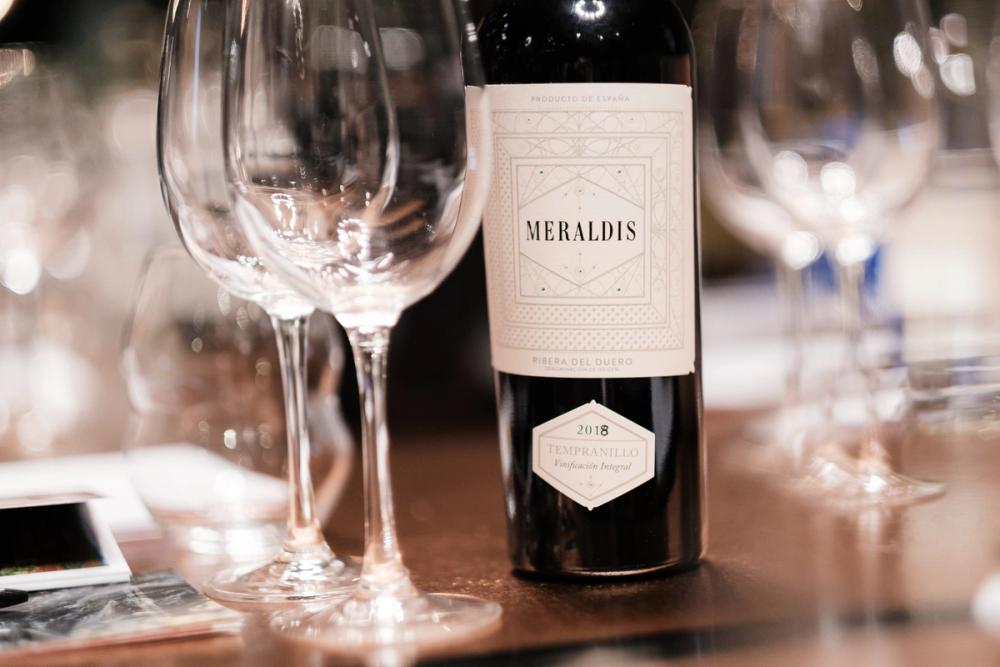
The second wine selected is not currently in the UK but is seeking distribution. It comes from the Yllera family, a sixth-generation wine producer in the region, currently in the hands of brothers Marcos and Carlos Yllera. The VivaltuS is a new project from the winery which Atkin sees as being a good example of a 100% Tempranillo that has been made with reduced oak, which is becoming a distinctive new style for Tempranillo in the region. “There is some real elegance there,” he says.
The panel was impressed by how well the wine held its alcohol and the good balance between structure, with fine textures but also enough acidity to even things out on the palate. The wine is aged in French oak barrels for 12 months.
3rd wine
Vina Sastre Pago de Santa Cruz Gran Reserva 2015 (14.5%)
100% Tempranillo
Aged for 30 months
Soils: Calcareo clay soils at around 850m
Price: 52€
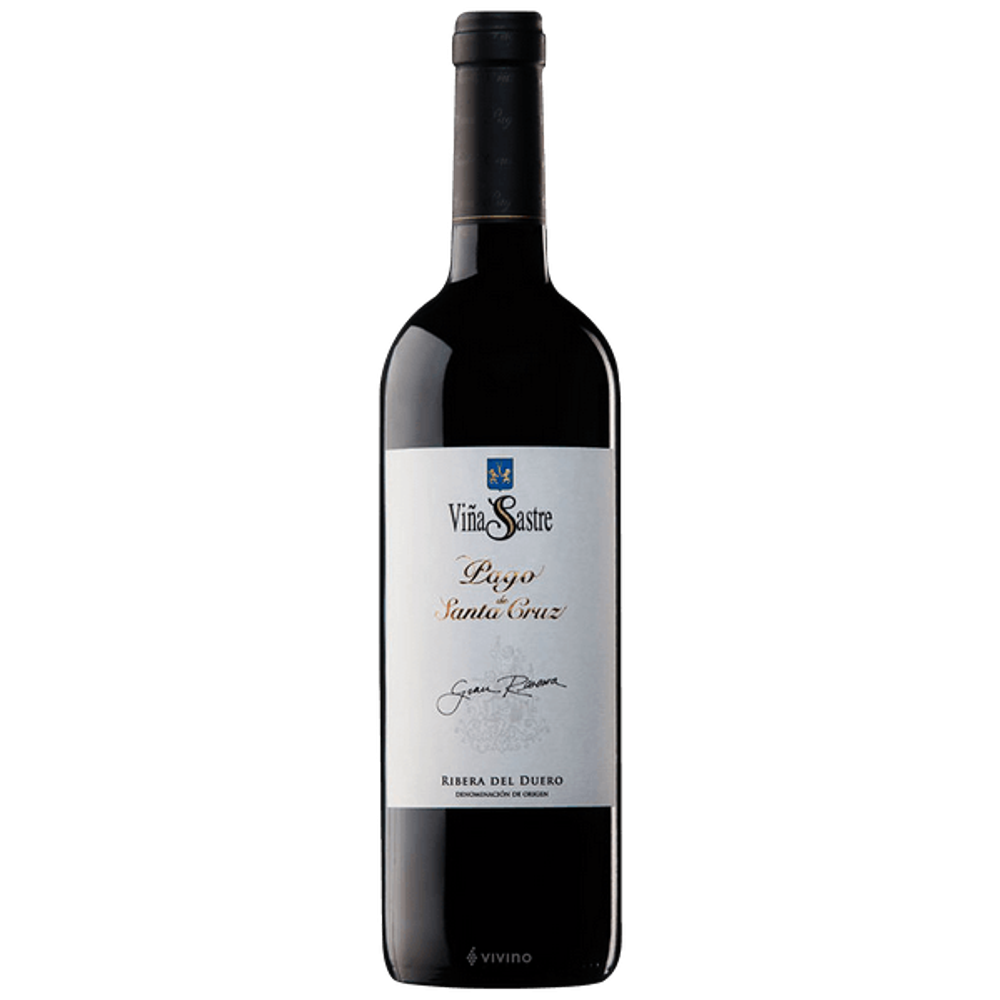
This is a wine that benefits from all its 30 months of ageing in French and American (30%) casks and is one of only 3,000 bottles produced.
“This producer makes really good wines,” says Atkin, who likens this wine more to a Rioja Tempranillo style. “It is a very good operation and quite traditional.”
Blyde says “it hides its oak well” and comes out as a “very balanced wine”. Macpherson says it “just tastes expensive and deserves to be taken seriously.”
Wadsack likes how there is that combination of strong fruit and structure and yet it still has a “lovely freshness that really comes through.”
André Luis Martins agrees that the wine’s breakthrough on the palate is all about its freshness. “You can just feel it. It’s all the better for the age it has in wood as well.”
4th wine
Legaris Peñaranda de Duero 2017 (15%)
100% Tinto Fino
Soils: chalky, with areas of sand, clay and loam.
Price: 32€
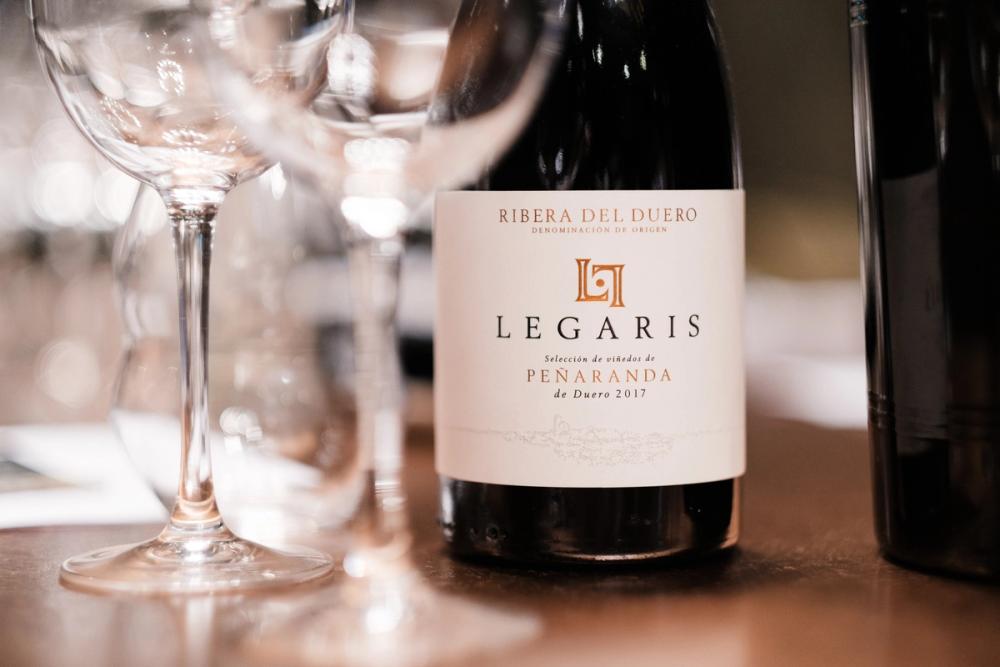
This is a good example of what some of Spain’s most world-renowned producers are now doing in Ribera del Duero, or in this case what Codorniu, in particular, is investing in. This is the third release of Legaris’ Village Wines range and looks to shine the spotlight on the village of Peñaranda de Duero, in Burgos. It is made exclusively from Tinto Fino, grown in three small parcels of bush vines dating back to between 1930 to 1950.
Another wine that the panel put in the “elegant and balanced” bracket with a particular likeness for its “deep ripe cherry colour and spice”.
Atkin says he is particularly impressed by this wine as it comes on the back of a fierce frost in 2017 where many producers lost at least half of their crop. The wines that have survived tend to be on the more powerful side of the fence, which makes this wine’s fresh credentials all the more credit-worthy.
5th wine
Montebaco Cara Norte Tinto Crianza 2016 (14.5%)
100% Tempranillo
Price: 15€ (2018)
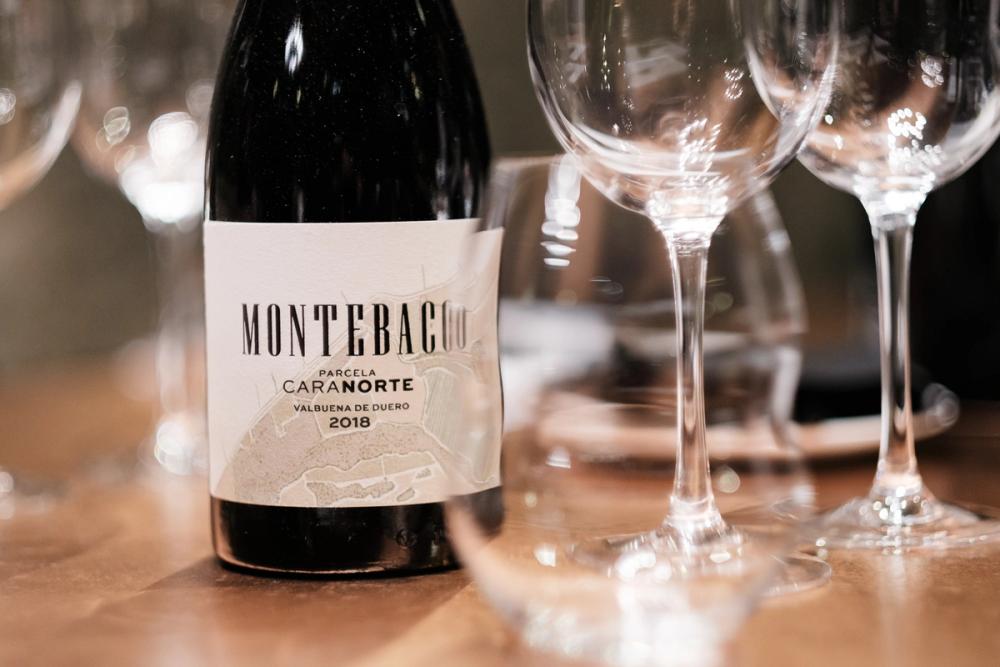
This organic wine comes from vineyards planted between 840m to 880m in Valbuena de Duero in the western part of Ribera del Duero. This is where the winters are even bleaker than in the rest of the region, with its hills keeping temperatures extremely cold during the day.
Atkin says this is definitely an area of Ribera del Duero to watch in the coming years as its low temperatures allow it to make wines that other parts simply can’t. It’s why the best wines come from the cooler vintages, he adds. “It’s a really interesting site and not that expensive.”
The panel was particularly excited by the wine’s potential and loved its sweet nose of “blackberry and black cherry fruits”, a wine that keeps it freshness, has good acidity, but also real depth and structure to it. This particular wine is made using 30% new wood.
Belcher was particularly impressed by the quality and value of the wine. “It’s at such a great price,” he adds.
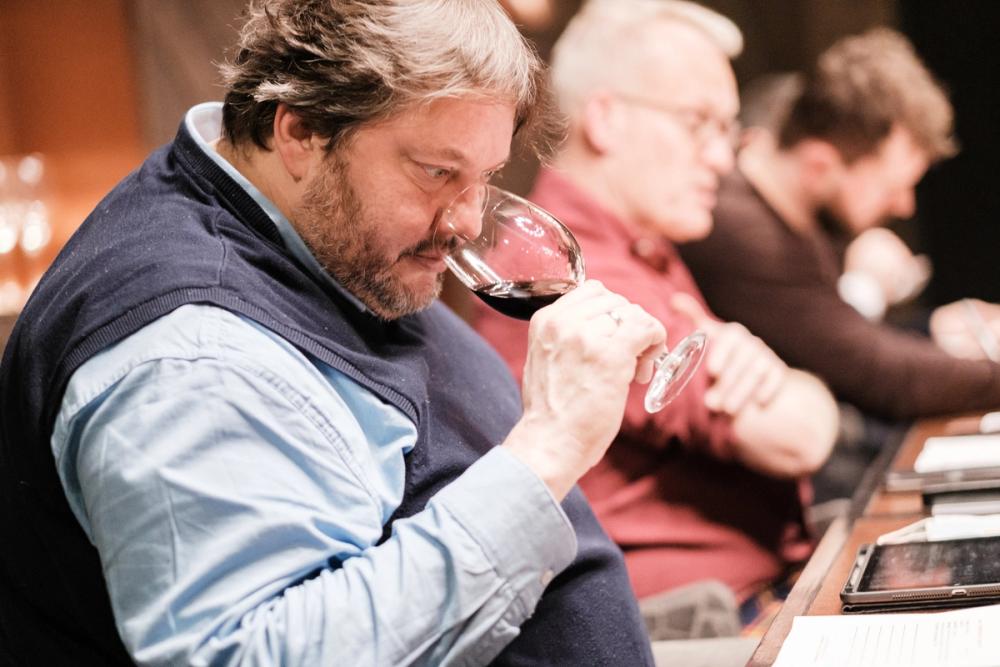
Joe Wadsack was impressed by how far the wines and winemaking have clearly improved in the Ribera del Duero. Photograph Thomas Skovsende
Wadsack says you can really feel how the “cold soils manifest themselves in the wine. It’s got a lovely clarity to it. It’s a wine that is very sure of itself.”
André Luis Martins says “the elegance and the charm is all there in this wine. You can put this up against a Left Bank Bordeaux and it can beat it up on both price and quality. It’s got a lovely fruit character. It’s hard to get people to move from one classic region to another but this is a wine to do it.”
Wadsack agrees: “This would kick a Pomerol into touch. There is a real architecture to the tannins. It’s a very nice, serious wine.”
Atkin says he is particularly pleased to see how producers who are investing in the area are doing so with the intention of making the region well-known for the quality of its wine first and are not trying to push prices from the outset, but rather keep them competitive to attract buyers’ interest.
“The prices do not live up to the ego of those producers who think a wine’s price should reflect their ambition,” he explains.
Blyde sees this as a style of wine that the region would do well to “market itself on”.
Atkin agrees and says this is very much a wine to build up through the on-trade.
6th wine
Quinta Milu, El Malo 2014
100% Tempranillo
40 year old vines
Soils: Sandy clay
(Indigo Wines)
Price: 40€
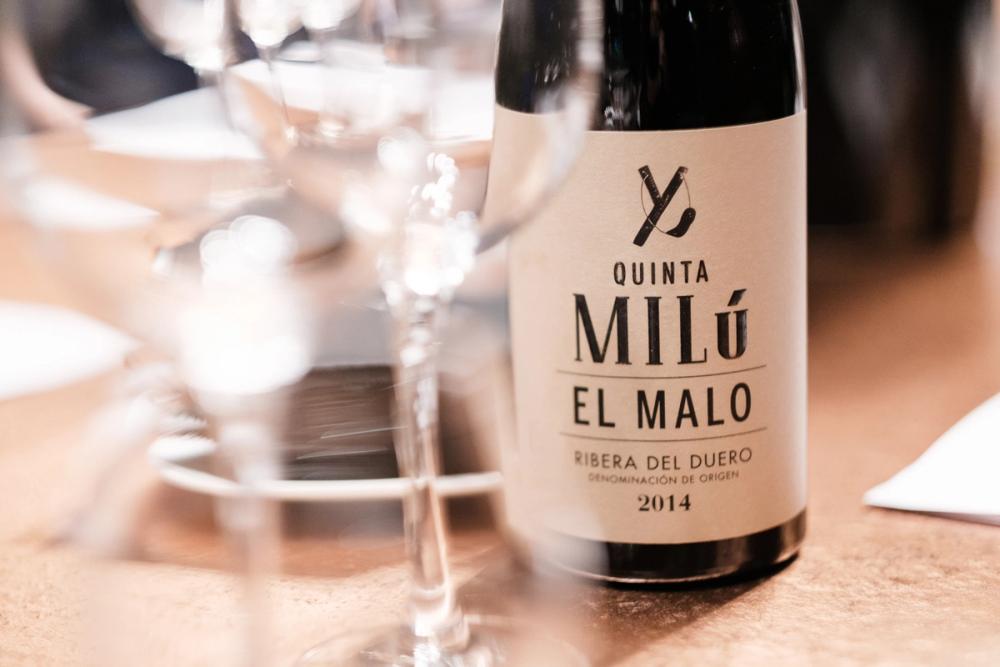
This is a wine that Atkin says demonstrates what some of the younger winemakers in Ribera del Duero are doing to make what could be seen as “funky” wines, but are also very well made. It comes from 40-year-old vines grown at a high altitude of 920m in the sandy clay soils of La Aguilera in Burgos.
Its UK importer, Indigo Wines, says winemaker Germán Blanco “champions a fresher style of Tinto del País – the local name for Tempranillo”. Made from what he describes as more of a ‘micro-winery’ where foot treading, wild yeast fermentation and minimum intervention are all key to the whole process. The goal is to make wines that have “delicious rusticity, purity of fruit, and incredible freshness”.
“I really believe in this wine,” says Atkin. “This is where the Ribera del Duero is going and where I think it can build its brand on.” It is also in a part of Ribera del Duero made up of five villages that each have their own distinct winemaking styles.
“I love it,” agrees Wadsack. “There is so much going on here. It’s truly lovely.”
“This is a wine that people can sell,” adds Belcher. “Our managers and staff can sell this well as a real point of difference. It has such a freshness and naturalness to it.”
7th wine
Bodegas Arzuaga Navarro
Amaya 2016 (14.1%)
95% Tempranillo and 5% Albillo
Soils: Sandstone and alluvial with limestone at high altitudes.
Price: 65€
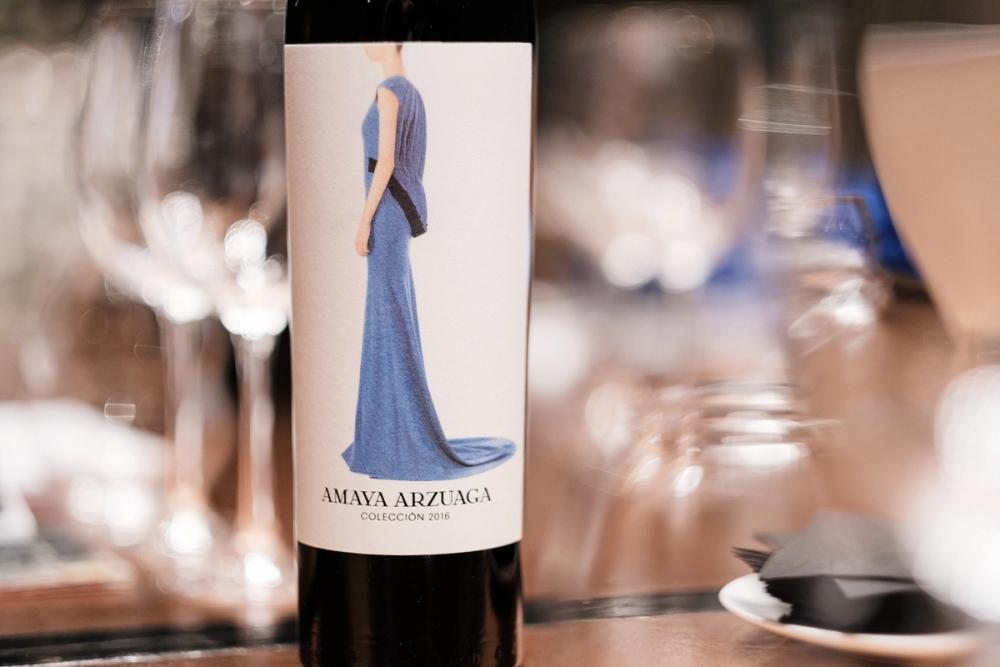
This bodega takes its grapes from centuries-old pre-phylloxera vineyards to produce a wine that is aged in new French oak barrels for around 18 months, and then foot trodden to make a clear, bright, cherry red wine built with great aromas of caramelised fruits and black fruit.
Atkin says this is a “big winery that is making really good wine”.
Wadsack says the “sheer fruit extract hides the tannins well. It has abundant ripeness.”
8th wine
Vinedos Alonso del Yerro
Maria 2018 (14.5%)
100% Tempranillo
Soils: Chalky clay and chalky gravel.
Price: 55€
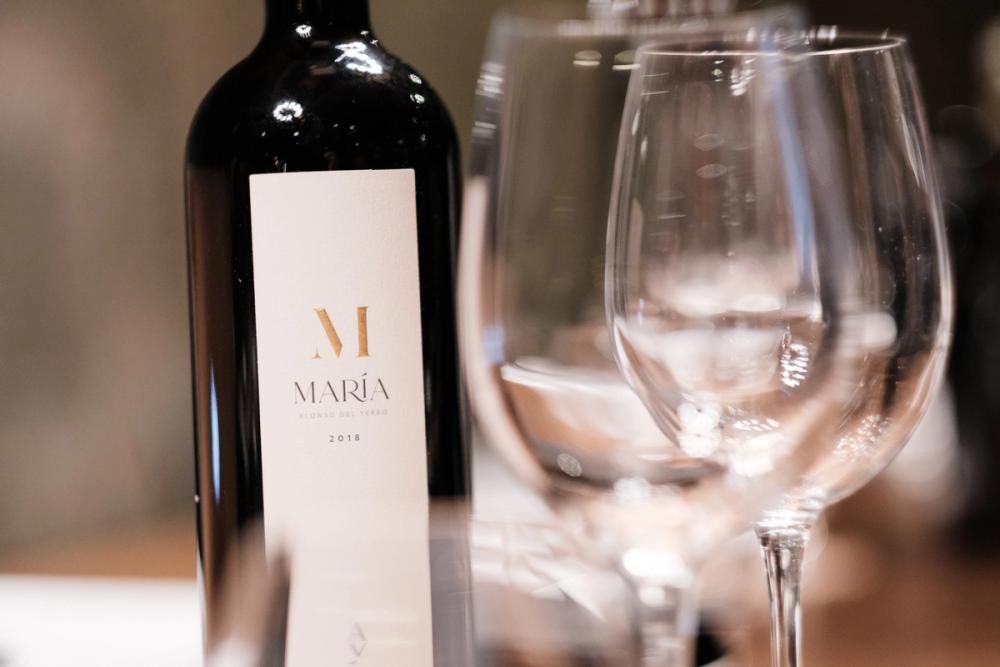
This is a single estate wine with serious intention. It’s clear its Bordeaux consultant has been put to good use with a careful selection of wines from two parcels, one chalk clay to give it density and roundness, and the other, chalky gravel. The vines are planted at 840m.
Atkin says this is still a very young wine and its best years are way beyond it, but it’s a real indication of what Ribera del Duero can do with its serious winemaking credentials. Here the Bordeaux influence does really come through, but again it is the height of the vines that help give the wine its elegance and balance.
“It does, again, have those Pomerol notes to it,” says Wadsack. “It’s very plush and has a lovely texture. It has an almost dry herb-like backbone to it.”
“I would love to taste this wine again in 10 years’ time,” says Blyde. Macpherson agrees and would really like to see how the style evolves.
“It’s got real Cabernet overtones to it,” adds Luis Martins.
9th wine
Melida Wines
Dos Alas Rojas 2019 (15.5%)
100% Tempranillo
900m
Soils: Sandy, clay with stony
Price: 45€
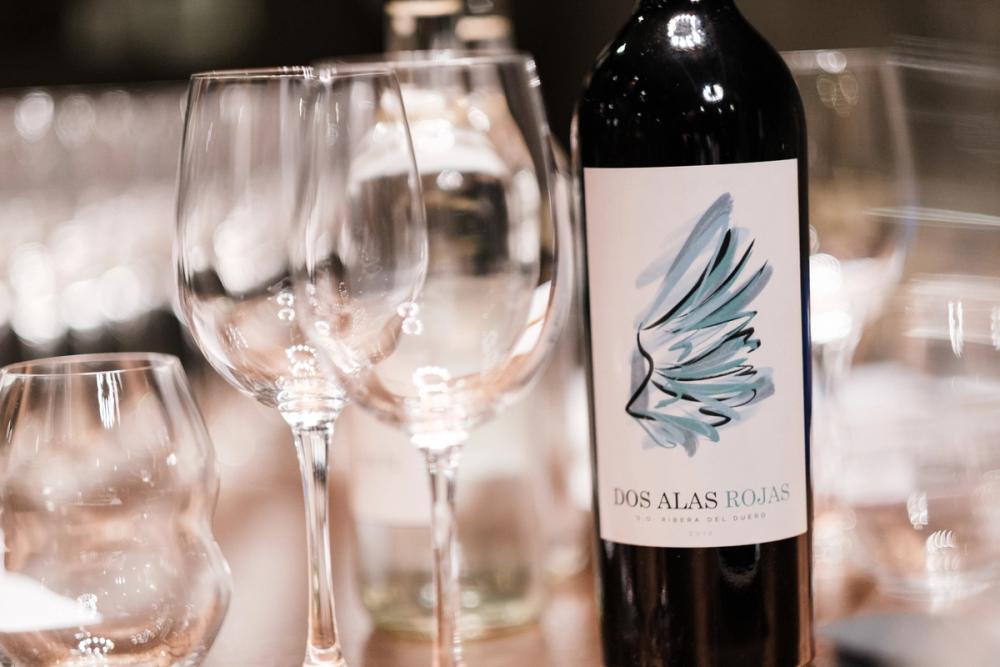
Melida Wines is a project led by two sisters, Silvia and Miriam, who farm their vines organically and harvest by hand. This is very much an artisanal approach, where wines are very much hand-crafted and hand-labelled, with an annual production of 10,000 bottles.
This wine is aged for 24 months in 500 litre French oak barrels. It is a blend of two barrels with different toast levels, one of which has a white wine toast.
Toast is very much the word for a wine that is made in extremely hot conditions, says Atkin – which is reflected in its high 15.5% ABV.
Wadsack says this has as a Mediterranean style, and a “pedigree of tannin that you would expect to find in Bordeaux”.
The panel were again widely impressed by how the wine showed great balance and some degree of freshness despite its high abv.
10th wine
Bodegas Marta Mate 2018 (14.1%)
100% Tempranillo
Soils: Clay and calcareous
Price: 29€
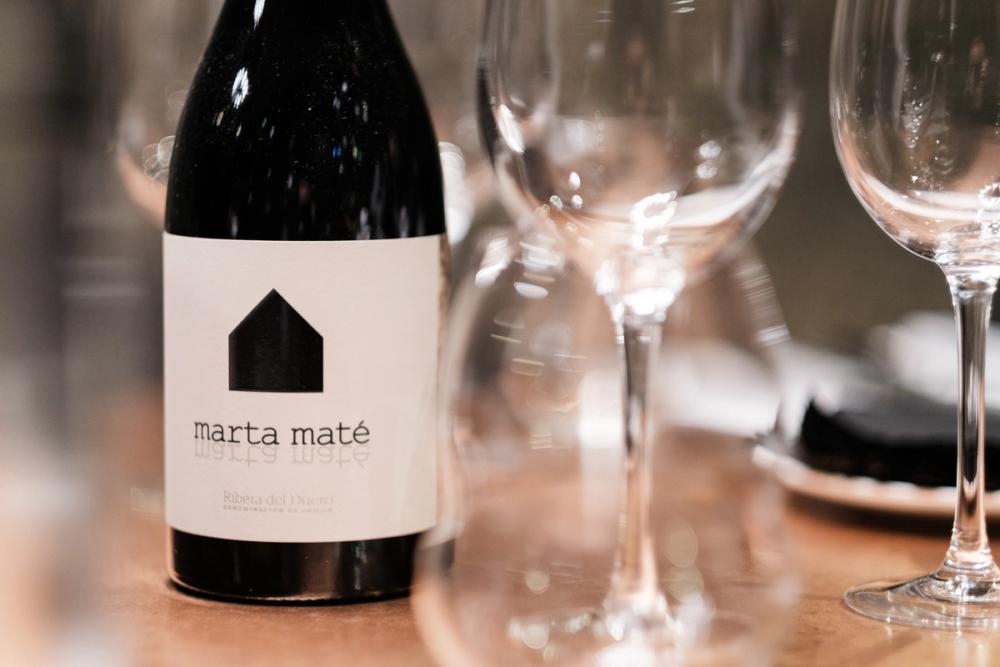
The panel were united in their praise for this wine, and gave particular credit to Naked Wines for importing it. Macpherson was particularly taken by its “very smart packaging”.
Atkin goes as far as calling it a “genius wine”. “This is a great example of a wine that comes from the cooler climate in Ribera del Duero. The coolest probably in the region. It is from the northern extreme of the region.”
The wine comes from organic and biodynamic vineyards with over 100 year old vines grown at 900m and 930m. Fermentation takes place in concrete tanks and then the wine spends 14 months in French oak barrels with the final blending done in concrete vats. It helps to create a wine with an intense violet colour and natural acidity, with strong flavours of black fruits.
Atkin was full of praise for winemaker Marta Castrillo and her team. “They are good people and I was so lucky to have spent some time with them.”
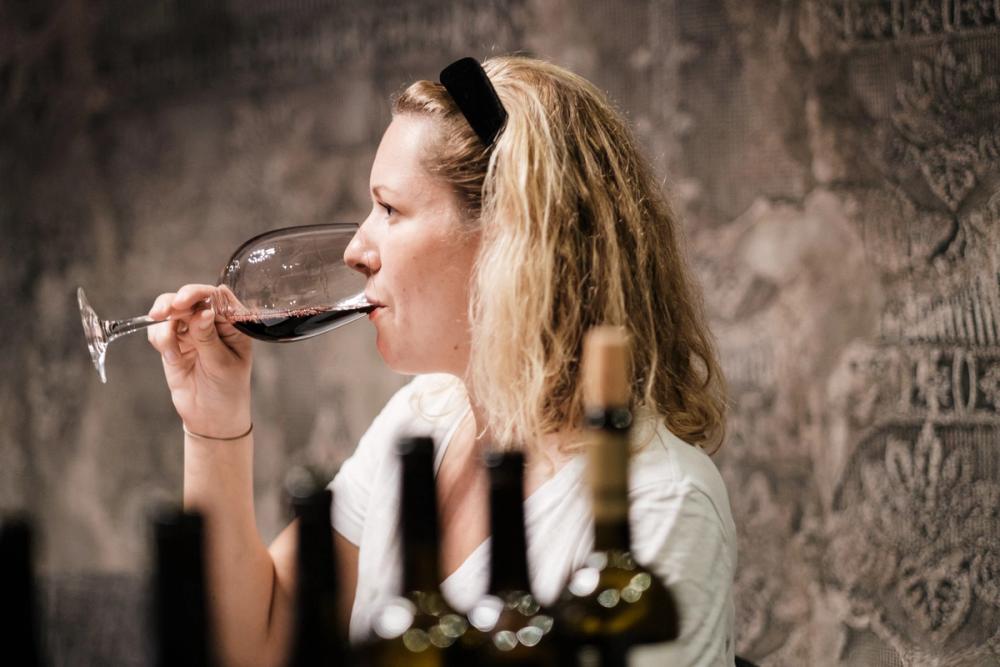
Jeroboams’ Maggie Macpherson was impressed by the packaging and quality of the Marta Maté wine. Photograph Thomas Skovsende
He has also made the winery one of the few to have “First Growth” status in his Ribera del Duero report.
Wadsack says that if he found this wine in a blind tasting you might think it was from the New World. “If you love Malbec and want to know where to go from there then this is the wine for you. This is very much the next step up. The gateway drug from the New World to Ribera del Duero.” Luis Martins agrees that its riper style has more in common with Malbec but the cooler climate brings it back to the Old World.
11th wine
Bodegas Briego 2011, Briego Oyada (14.5%)
100% Tempranillo
910 metres
Price: 43€
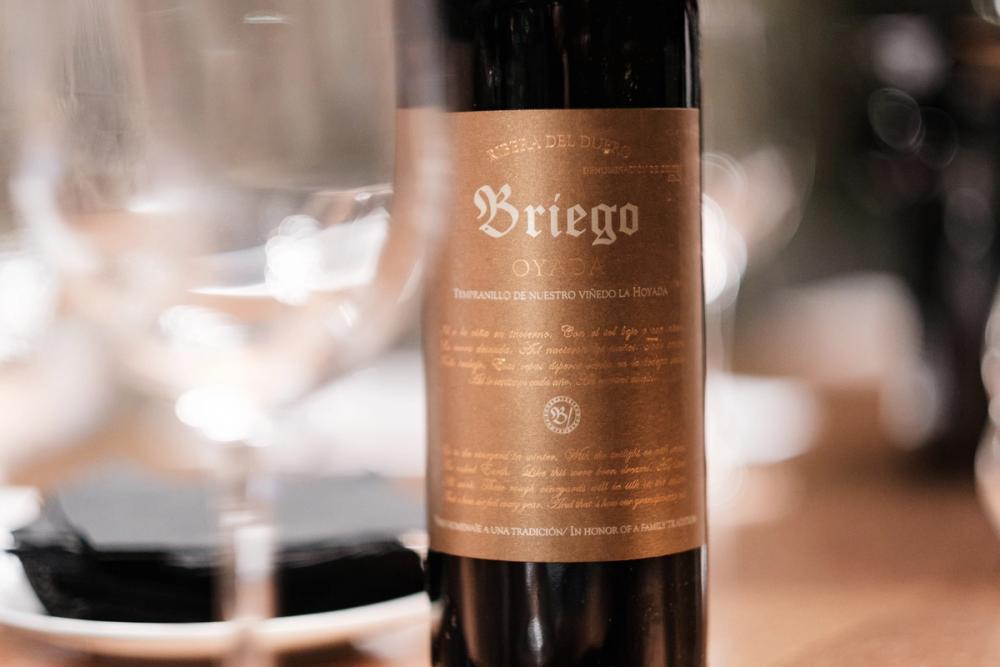
The panel were also very much taken by another New World-style wine from a producer that only started making wine in 1992. Luis Martins is particularly taken by its “juicy heaviness and its use of oak”.
Wadsack was particularly interested in how this was another high altitude wine, but offered a very different style to the other wines in the tasting. “These are all contrasting wines which makes them even more interesting. ‘There is no way you would think it was a 10 years old plus wine,”
Atkin says it still feels very young even for a 2011 wine and that its cherry red colour belies the deep and intense wine within.
Blyde says he likes the notes of “cherry liqueur and redcurrants” which combine well with the more “smoky” tones and touches of “spice” from the wood.
Macpherson says that it was the New World style wines that stood out to her the most during the tasting, even though a Jeroboams customer would probably prefer the more Old World classic styles.
Buyers’ summary
Paul Belcher says the session really brought home to him the big regional differences of Ribera del Duero which he had certainly not appreciated before. “It was great to see how much diversity there was in the wines. It was a great session to be part of.”
Atkin hopes it really got across the “massive potential” the region has and it is always important to host events that give influential buyers the chance to taste the wines in such a considered way.
The advantage that Ribera del Duero has is that people “don’t have a set image of what it is yet,” he adds. “There are certainly more exciting producers in Ribera del Duero than there are in Rioja. I am happy to repeat myself and say it is one of the most exciting regions in Europe.”
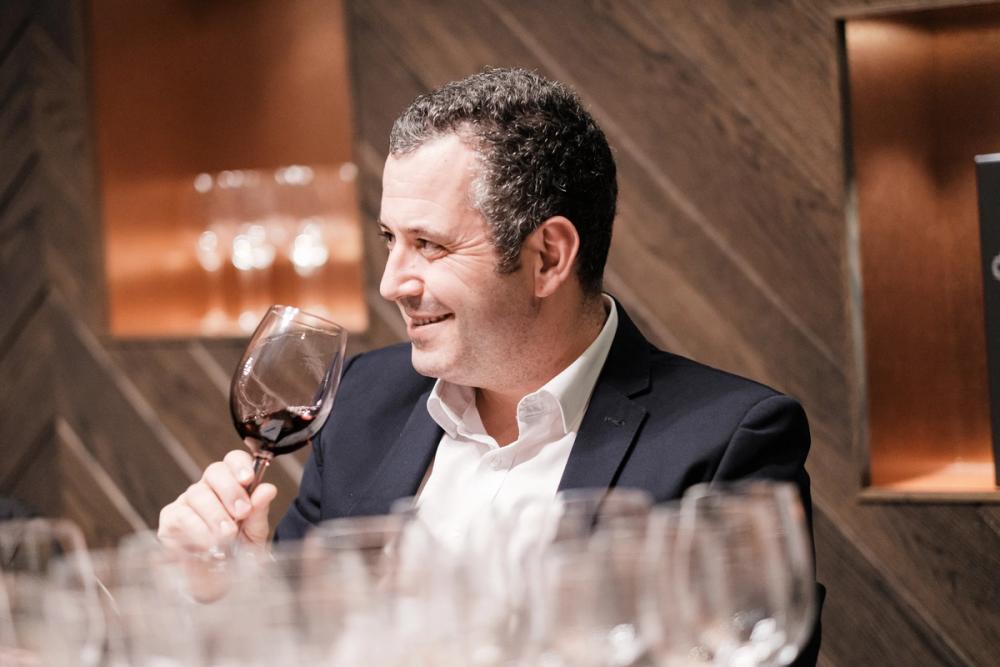
Andre Luis Martins says he would like to see his suppliers offer him more choice of wines from Ribera del Duero. Photograph Thomas Skovsende
Wadsack says it’s clear the region has the wines, the diversity and the quality to get any buyer excited. “You have to go with a top down approach and start with the on-trade first and the region’s more expensive wines,” he adds.
But it also relies on how open and ambitious trade buyers are to listing wines from the region, he adds. “It all comes down to the importers and what they are prepared to buy. All I can say is that when I first came into the wine industry some 13 years ago I tried a Pingus PSI and it opened my eyes to what wine can offer. We need our importers to be bringing these wines to the trade to list because we want to see them.”
Belcher says he would certainly like to see the same variety of wines being offered to him by his suppliers as he gets from Rioja. “There is clearly more than one style of Ribera for us to buy. We need to get more of these wines into our suppliers as they are currently not bringing them to me. If we are not being shown them, we can’t sell them.”
Blyde suggests restaurants could work with their suppliers to offer flights of Ribera del Duero wines on their list by the glass to show its diversity. He was particularly taken by how producers were often making their best wines in what were deemed to be less good vintages. “That is really interesting to see.”
Machperson says she is pleased to see far more diversity in Ribera del Duero’s wines than she appreciated, but is also keen to flag why this can be an issue for a retailer and wholesaler like Jeroboams.
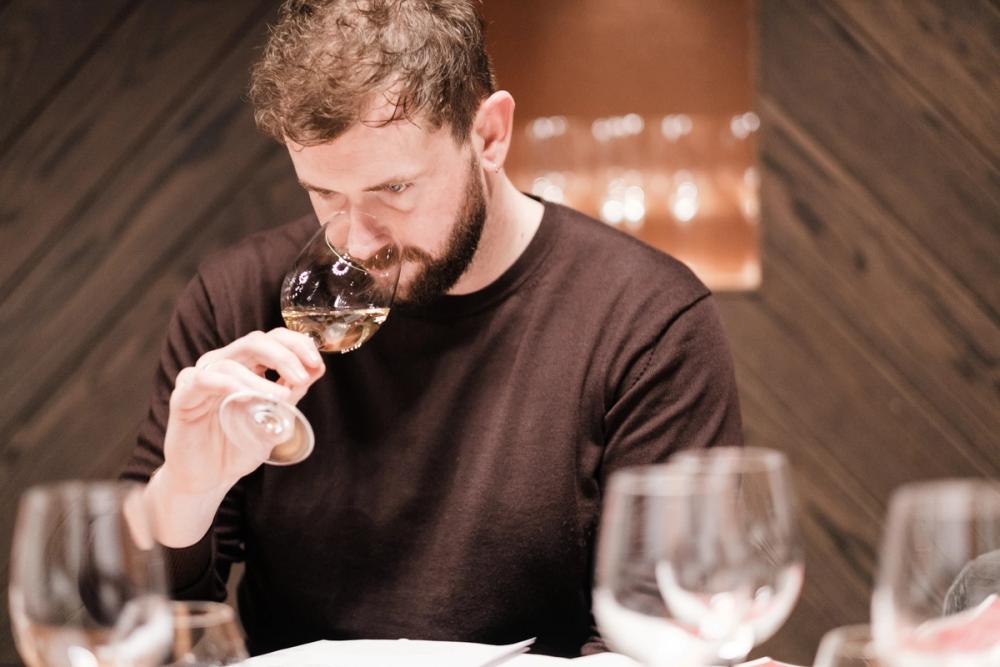
Harry Crowther says there is definitely so much diversity to explore from Ribera del Duero wines ideal for his customers at Good Pair Days. Photograph Thomas Skovsende
She agrees, though, that for Ribera del Duero to really make strides in the UK it needs more importers to take on a wider selection of wines. “If you only have one producer from a region you will sell less than if you have a small group of producers that you can use to show the region as a whole. Otherwise the wine just sits on its own.”
Luis Martin would love to see more of that approach from his suppliers. “That would be really helpful for us to have a choice of say two to three producers rather than simply a single wine to choose from.”
Atkin offers this as a solution. “In Ribera del Duero it is all about the altitude. That’s the most important aspect. The higher you go the more limestone you get. It has some of the highest vineyards in Europe. It also has an extreme climate with very hot summers and extremely cold winters where no vintage is easy. The differences don’t come through an ageing ladder, they come from the villages and their different altitudes.”
- You can read Part 1 of our Ribera del Duero debate on The Buyer here.
- For further information about Ribera del Duero, contact rdd@cubecom.co.uk or visit riberadelduero.es/uk.
- Follow Ribera Del Duero’s activities in the UK on Twitter @DORiberaUK.
